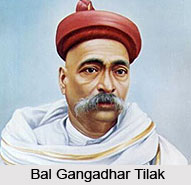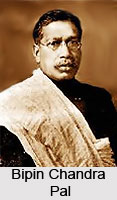 Liberal Party of India, a renowned political establishment, advocated and promoted freethinking and pro-British outlook, in the politics of India, under the rule of the British Indian Government. The members of the Liberal Party of India and other liberals practically never supported the departure of the country from the supremacy of the British Empire in India. In fact the Liberals advocated the rule of the British administration in India. These view points revolved around the thought that Indians must appeal and conduct a dialogue with the British authorities to acquire political freedom and a self-government status. The members of the Liberal Party of India also espoused the system of education of the British, as well as the influences of European cultural on the social life of the Indians.
Liberal Party of India, a renowned political establishment, advocated and promoted freethinking and pro-British outlook, in the politics of India, under the rule of the British Indian Government. The members of the Liberal Party of India and other liberals practically never supported the departure of the country from the supremacy of the British Empire in India. In fact the Liberals advocated the rule of the British administration in India. These view points revolved around the thought that Indians must appeal and conduct a dialogue with the British authorities to acquire political freedom and a self-government status. The members of the Liberal Party of India also espoused the system of education of the British, as well as the influences of European cultural on the social life of the Indians.
History of Liberal Party of India
The members of the Liberal Party of India were originally members of the Indian National Congress Party that was founded to establish reasonable political dialogue with the British administration.
 But eventually the liberal members left the Indian National Congress with the rise of Indian nationalism and various eminent leaders such as Bal Gangadhar Tilak, Bipin Chandra Pal and Lala Lajpat Rai. The Liberal Party was founded in the year 1910 and generally British officials and other British intellectuals participated as the members of the committees of the party. The most important leaders of the party were Sir Tej Bahadur Sapru, M. R. Jayakar and V. S. Srinivasa Sastri.
But eventually the liberal members left the Indian National Congress with the rise of Indian nationalism and various eminent leaders such as Bal Gangadhar Tilak, Bipin Chandra Pal and Lala Lajpat Rai. The Liberal Party was founded in the year 1910 and generally British officials and other British intellectuals participated as the members of the committees of the party. The most important leaders of the party were Sir Tej Bahadur Sapru, M. R. Jayakar and V. S. Srinivasa Sastri.
Activities of Liberal Party of India
 The Liberal Party of India opposed the policies of Mahatma Gandhi and the various movements conducted by him like the Non-Cooperation Movement (1919 to 1922), the Salt Satyagraha (1930 to 1931), and the Quit India Movement (1942 to 1945). The liberal members of the party also participated in the legislative assemblies and councils at the municipality, provincial and central levels. Until the formation of the Government of India Act 1935, most of the Indians and the Indian National Congress rejected the councils and barely voted. The provincial and central legislatures were considered as rubber stamps of the Viceroy of India. These were piled with un-elected British officers, pro-British native princes and members of religious minorities who were represented beyond rational proportions. Until the legislation in 1935, only a few seats were up for election.
The Liberal Party of India opposed the policies of Mahatma Gandhi and the various movements conducted by him like the Non-Cooperation Movement (1919 to 1922), the Salt Satyagraha (1930 to 1931), and the Quit India Movement (1942 to 1945). The liberal members of the party also participated in the legislative assemblies and councils at the municipality, provincial and central levels. Until the formation of the Government of India Act 1935, most of the Indians and the Indian National Congress rejected the councils and barely voted. The provincial and central legislatures were considered as rubber stamps of the Viceroy of India. These were piled with un-elected British officers, pro-British native princes and members of religious minorities who were represented beyond rational proportions. Until the legislation in 1935, only a few seats were up for election.
Decline of Liberal Party of India
The Liberal Party of India failed to gain popularity with the general population of India. It was also widely distrusted by Indian nationalists. After the withdrawal of the British Government of India and the Indian Independence in the year 1947, the Liberal Party of India disappeared from existence.



















